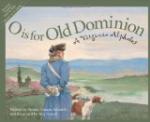The chief architectural feature of the room is this stairway. Starting in one corner, it rises along the panelled wall until half way to the ceiling, then turns sharply out into the room for the remainder of its ascent to the second floor, thus exposing overhead a handsome soffit. The effect, in connection with the great panelled well of the staircase, is one of rich and goodly ancientness.
Indeed, though you may enter Shirley feeling that the house, like some long-lingering colonial belle, is perhaps not quite frank with you about its age, you will not find the hall taking part in any such misrepresentation. Despite some modern marks and even the fact that the fireplace has been closed, this room says in every line that it is very old.
It stands true to the memory of its seventeenth-century builder who had known and loved the “great halls” of “Merrie England.” It tells of the time when the life of a household centred in the spacious hall; when there the great fire burned and the family gathered round—of the time when halls were the hearts, not the mere portals, of homes.
And so in this room, as in few others in our country, does the visitor find the setting and the atmosphere of manor-house life in early colonial days. He can well fancy this “great hall” of Shirley in the ruddy light of flaming logs that burned in the wide fireplace two centuries and a half ago. Dusky in far corners or sharply drawn near the firelight, stood, in those days, chests and tables and forms and doubtless a bed too with its valance and curtains. In a medley typical of the times in even the great homes, were saddles, bridles, and embroidery frames, swords, guns, flute, and hand-lyre.
Here, in a picturesque and almost mediaeval confusion, the family mostly gathered, while favourite hounds stretched and blinked in the chimney-place beside the black boy who drowsily tended the fire.
Here, the long, narrow “tabull-bord” was spread with its snowy cloth, taken from the heavy chest of linen in the corner, of which my lady of the manor was prodigiously proud. Upon the cloth were placed soft-lustred pewter and, probably almost from the first, some pieces of silver too. The salt was “sett in the myddys of the tabull,” likely in a fine silver dish worthy its important function in determining the seating about the “bord.” As family and guests gathered round, the host and hostess took places side by side at one end; near them the more important guests were given seats “above the salt,” while lesser folk and children sat “below the salt.”
Then, from the distant kitchen in the quadrangle, came slaves or indentured servant bearing the steaming food in great chargers and chafing-dishes. Doubtless, in those earliest days, the food was eaten from wooden trenchers, not plates; while from lip to lip the communal bowl went round. Knives and spoons were plentiful, but even in such a home as Shirley forks were still a rarity; and the profusion of napkins was well when helpful fingers gave service to healthy appetites.




